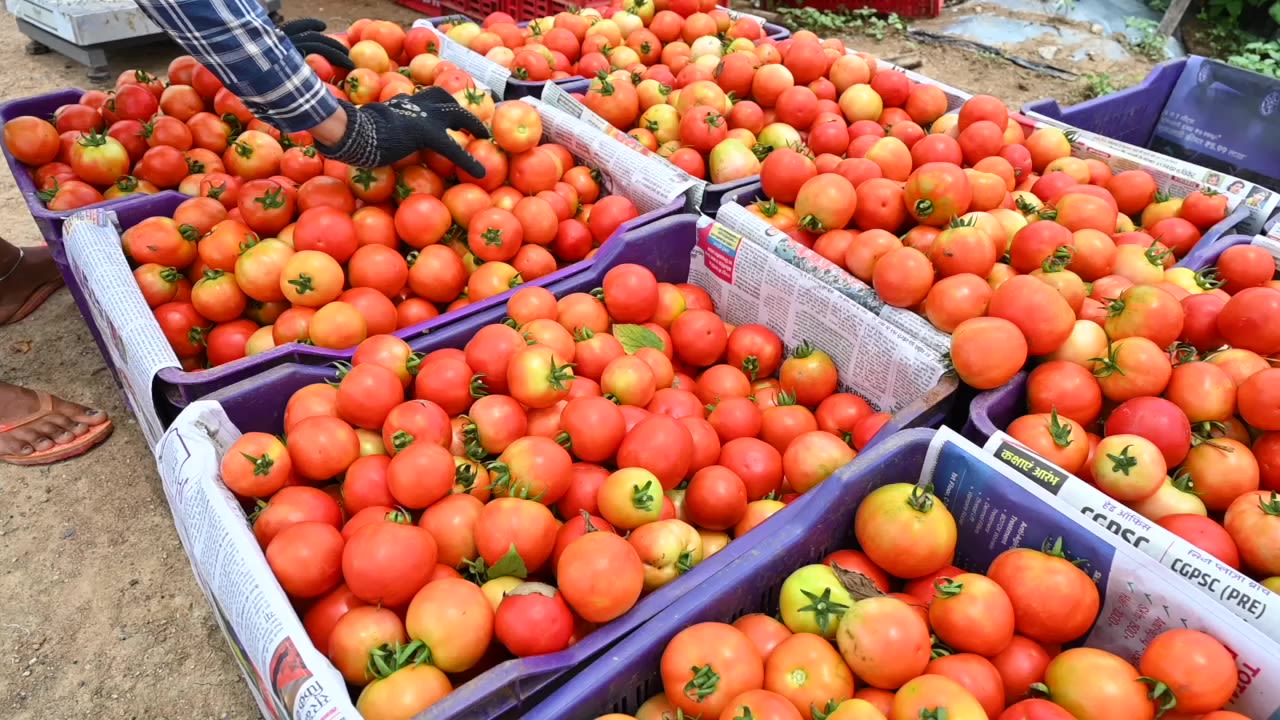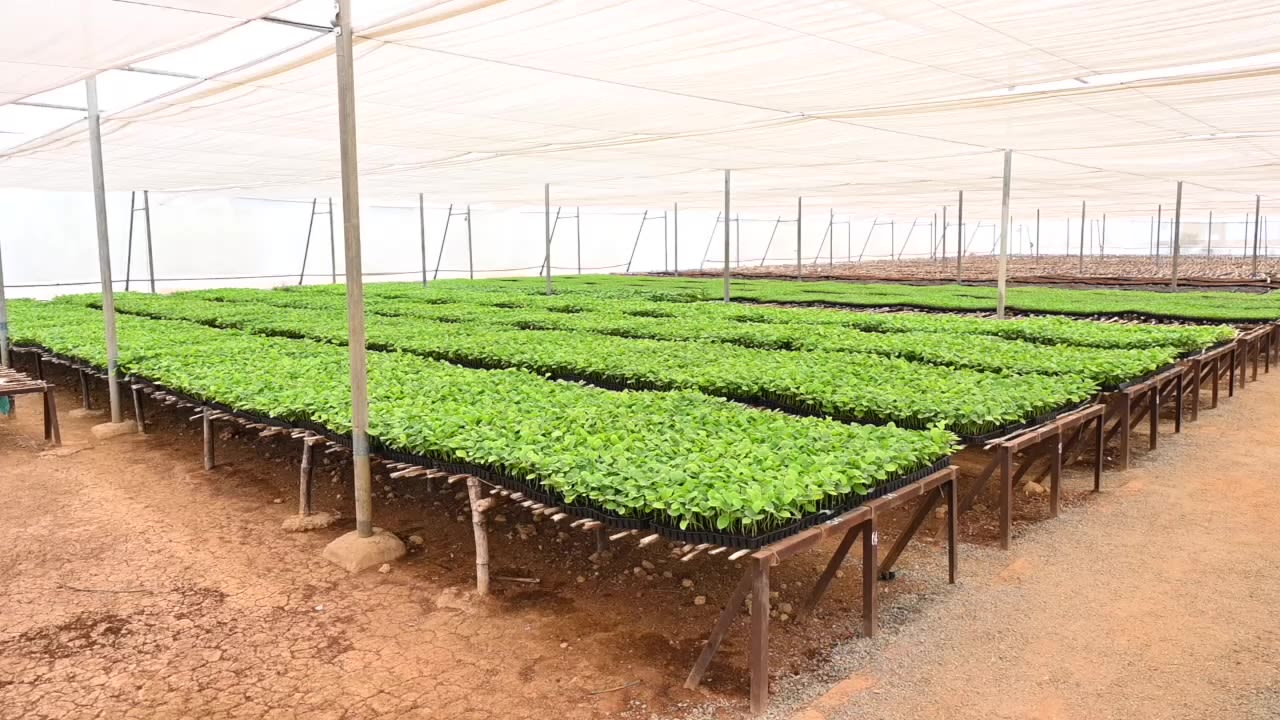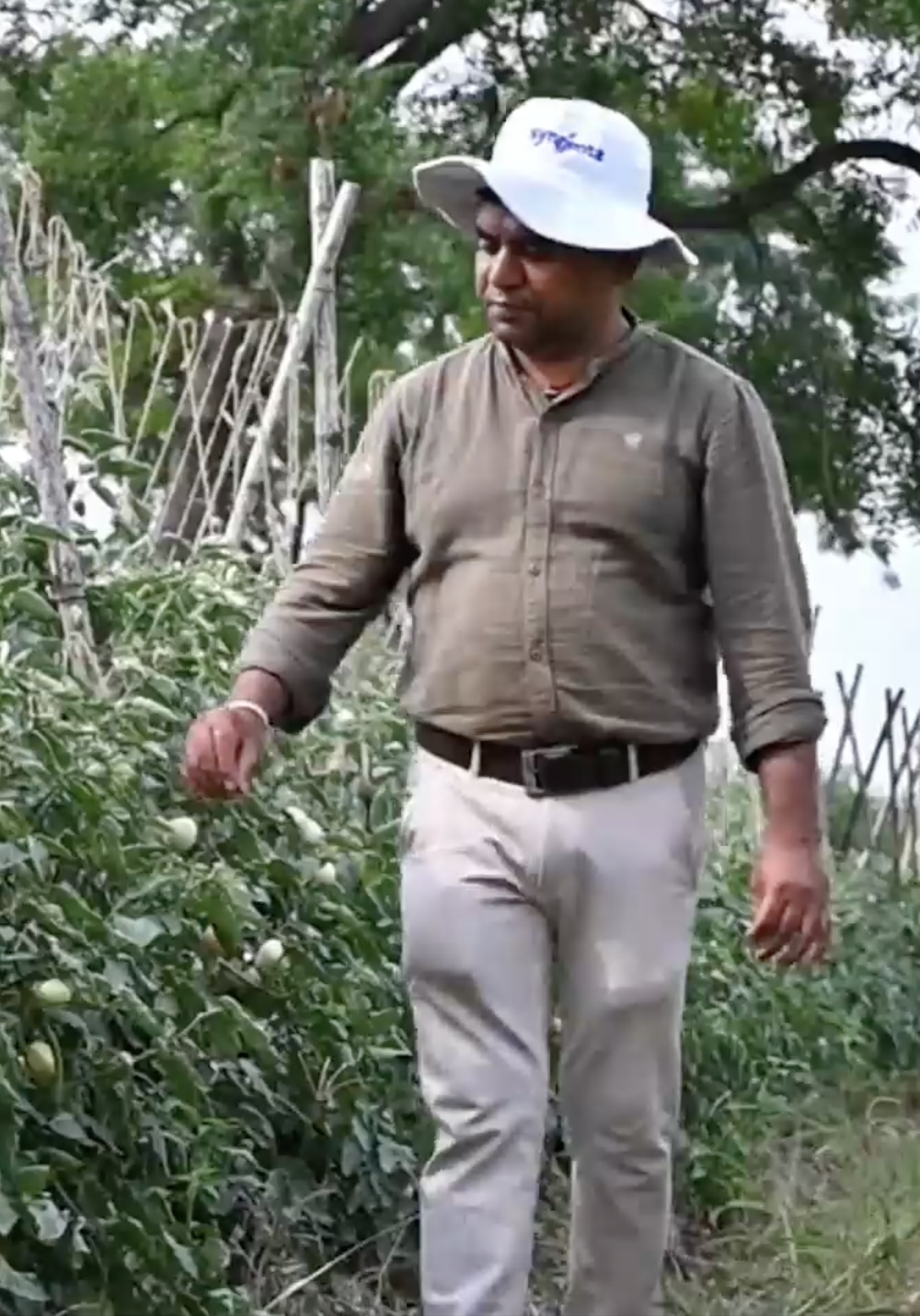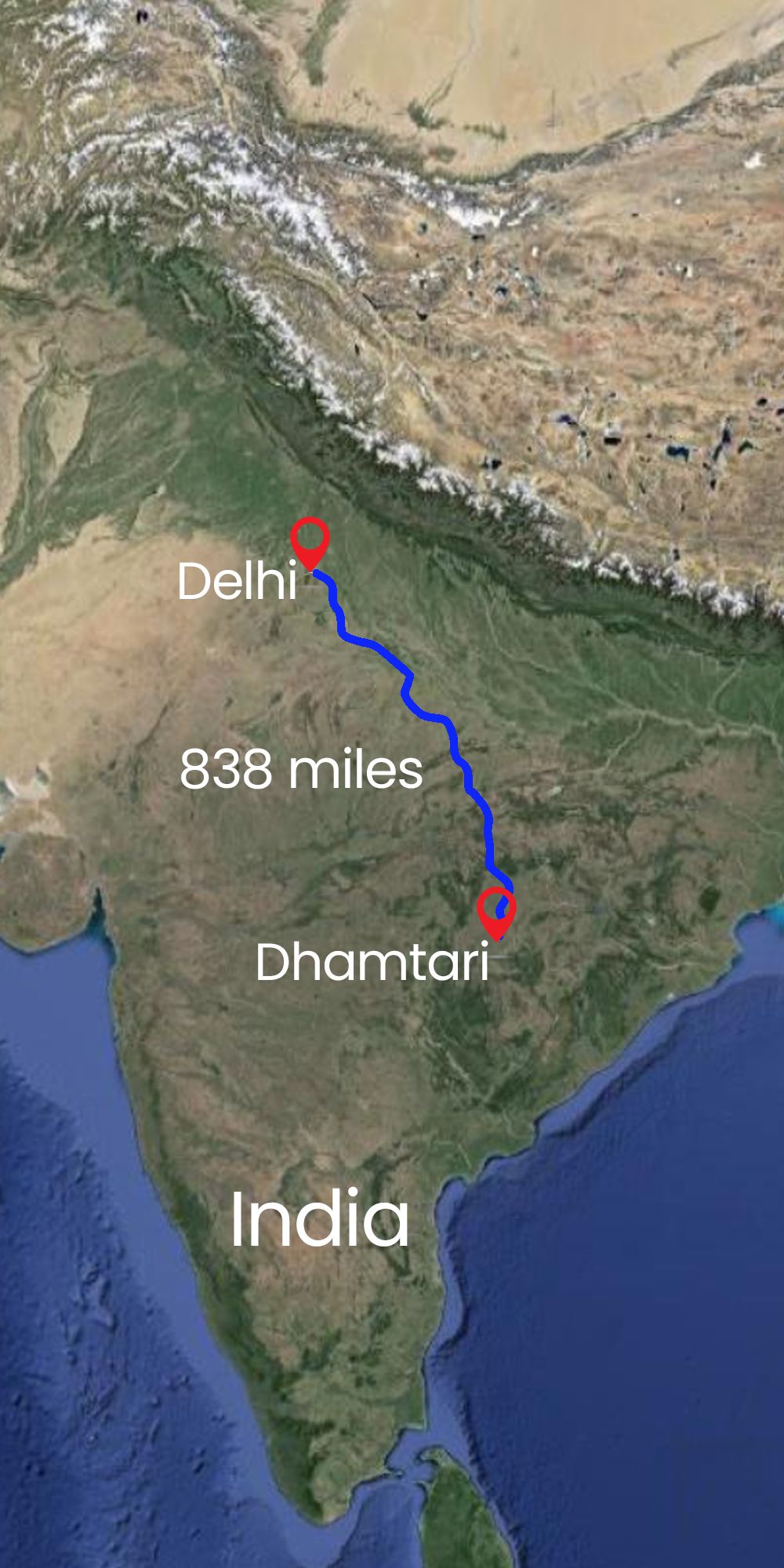Progressive Indian grower and innovative tomato variety are winning combination

On a sweltering afternoon in late spring, Arun Kumar Sahu walks through rows of perfectly aligned leafy tomato plants, inspecting his crops.
His farm is alive with activity. Dozens of workers labor in the blistering heat, harvesting crateloads of tomatoes for transport, as crickets thrum in the background.
Sahu farms in the district of Dhamtari, in Chhattisgarh, central India.
The seahorse-shaped state is tropical and humid with lush forests, owing to the monsoon season that strikes like clockwork from June onwards.
At this time of year, it’s very hot — daily highs of 40 degrees Celsius are not uncommon — but it will soon be much, much hotter. In a few months, the mercury will tip towards 50.
Chhattisgarh is often called the country’s grain bowl; such is the extent of its cereal crops.
But it is not easy to grow crops here: warmer temperatures mean stubborn pests and diseases spread more rapidly and are increasingly resistant to controls.
Though farmland makes up half of the region’s land use, productivity is often plagued by water scarcity, electricity shortages and unpredictable rainfall. And the produce farmers are able to grow must then be able to travel hundreds of kilometers on less-than-ideal roads before being sold. The nation’s capital, New Delhi, is a 23-hour drive from Dhamtari.
Sahu began as a grain farmer in 2007, but unpredictable weather conditions eventually forced him to rethink his crop selection.
“As rain was needed in farming grains,’’ he says, “during the time of harvest, we faced difficulties.”
He changed tack to grow vegetables — chilies, green beans, melons and tomatoes. He found that Syngenta’s Saaho variety of tomato seeds could withstand the difficult conditions, while producing high yields.
And so, over time, he expanded his acreage of tomato plantings, building his reputation as a reliable and progressive grower.
Today, across 300 acres of land, Sahu’s tomatoes are flourishing.
Each acre will produce 30 to 40 tons of the fruit, and its earning potential has doubled thanks to Syngenta’s seeds — with annual tomato sales of as much as $3.6 million.
Arun Kumar Sahu
Arun Kumar Sahu
A roadworthy crop

Sahu’s success is the result of a series of deliberate choices: how, what and where he grows his crops, a willingness to try new things, and a bit of luck.
“You can see,” he says, holding up a healthy green leaf. “The crops are quite good.”
A farm worker reaches beneath a cover of thick leaves and, as if performing a magic trick, pulls out a blood-red fruit the size of her palm.
Near the trucks waiting to transport the fruit sit dozens of crates stacked with hundreds of bright and plump tomatoes.
The crates will later be loaded onto the back of transport trucks, with just a sheet of newspaper separating each crate. Then they’ll be driven, sometimes for days on end, to be sold.
But Sahu knows they won’t spoil before then.
In fact, the Saaho tomatoes will continue to slowly ripen until they are in prime condition, just as they reach the market.
Each tomato “remains firm and holds its shape and color well,” he says. “So, if we send them on a three-or four-day journey, the produce is not damaged.
“People know it so well, they now demand Saaho tomatoes,” he says.
Breeding by design

The delayed ripening, the enhanced transportability and the hardiness of the tomatoes are all deliberately selected traits of Syngenta’s Saaho variety.
“We call it breeding by design,” says Ashish Patel, Head of Vegetable Seeds Development for the Asia Pacific region at Syngenta.
“What is the problem for the grower that we can solve with genetics?” Patel says. “That’s what our intention is.”
Patel’s team prioritizes traits that enable crops to flourish in tropical open-field environments, where the temperature, humidity and pest pressures cannot be controlled as they are in a greenhouse.
“The hot and humid environment,’’ Patel notes, “is very congenial for diseases and pests to evolve faster.”
And now, as the effects of climate change exacerbate these conditions, growers like Sahu need more help to control the uncontrollable — like disease epidemics.
“The tomato brown rugose fruit virus is now becoming a huge issue in controlled conditions,” Patel says.
The virus is known by its abbreviation — ToBRFV — and Syngenta has incorporated ToBRFV resistance into its seeds in response to its rapid spread across Asia, Europe, North America and Africa. The company is also working with farmers to stop the spread of the virus once detected.
Key to Patel’s breeding mindset is what the grower needs: pest resistance, reliably high yields and the ability to travel long distances in high temperatures in less-than-ideal transport conditions.
That’s why ‘cracking tolerance’ is incorporated into the Saaho variety, extending the shelf life of the fruit by up to three to four weeks with the ability to transport up to 3,000 kilometers without a blemish.
“If transported with the necessary care and conditions, the long-distance transportability trait and flesh thickness is such that it won’t spoil in transit before it goes to market and reaches the hand of a consumer,” Patel says.
“We bring that capability to farmers to sell the products to near and far national markets by giving them that innovation.”
An innovative mindset

Although he has been farming commercially for only about 15 years, Sahu says agriculture is in his blood.
"I am from a farming family,” he says.
But it was years of hard work and trial and error that enabled him to expand his business.
He incorporated better, more effective technologies into his growing methods as he discovered them — as when he replaced his traditional flatbed irrigation system with drip irrigation, known for its water efficiency.
The success of his farm, in turn, has allowed Sahu to further expand his site’s capabilities, installing solar panels and building his own greenhouse nursery, where he germinates his tomato plants before transferring them to the field.
The small decisions he’s made over the years: to grow a reliable product, to innovate where he can, to work hard and to have patience, have paid off in kind.
It allowed him to build a home where he lives with his family - his parents, his wife and his two children – and to look after them.
“We live a happy life here,” Sahu says.





